
12 Day Gorillas Wildebeests & Victoria Falls African Safari
12 Day Gorillas Wildebeests & Victoria Falls African Safari Book your Trip Safari Over View Brief Travel Plan Detailed Travel
The annual great wildebeest migration experience
The annual great wildebeest migration experience : One of the once-in-a-lifetime wildlife encounters only found in East Africa is the annual Great Wildebeest Migration (Kenya and Tanzania). For lovers of animals and the outdoors, it has emerged as one of the most sought-after activities.
The Serengeti-Mara habitat is traversed annually by over a million wildebeests in what is known as the “Great Wildebeest Migration.” The animals travel along a well-worn path in search of grass and water in columns made up of wildebeest and a variety of companions. They travel across the Serengeti National Park to the edge of the Ngorongoro Crater, over the plains of the Masai Mara National Reserve in Kenya, into southern Tanzania, and then make a clockwise loop back to where they started. As thousands of animals are taken by predators and eaten, and as thousands more are born, replenishing the numbers and maintaining the wildebeests’ cycle of life, there are always exciting moments along the route.
Every year, around 1.5 million wildebeests, 350 000 Thomson’s gazelles, 210,000 zebras, and hundreds of Elands and other hoofed animals take part in what has been dubbed “the greatest display on Earth,” hence the name of the Great Wildebeest Migration.
As the first group consumes the tops of the tallest grass, the second group will consume some of the medium-height grass, and so on, until the grass is nearly consumed by all three of the main groups before the herds move on. Additionally, it indicates that each group stays to its own kind, with little overlap in their distributions. In the entire Serengeti region, the grasses of the plains have the highest levels of calcium and protein.
The wildebeest’s ability to navigate their travels is unknown, although it is thought that their response to the weather—following the rains that encourage the growth of new grass—plays a major role in how they decide where to go. Although some experts contend that animals can detect rain from more than 50 kilometers away and that they react to distant lightning and thunderstorms, there is no scientific evidence to support these claims.

12 Day Gorillas Wildebeests & Victoria Falls African Safari Book your Trip Safari Over View Brief Travel Plan Detailed Travel
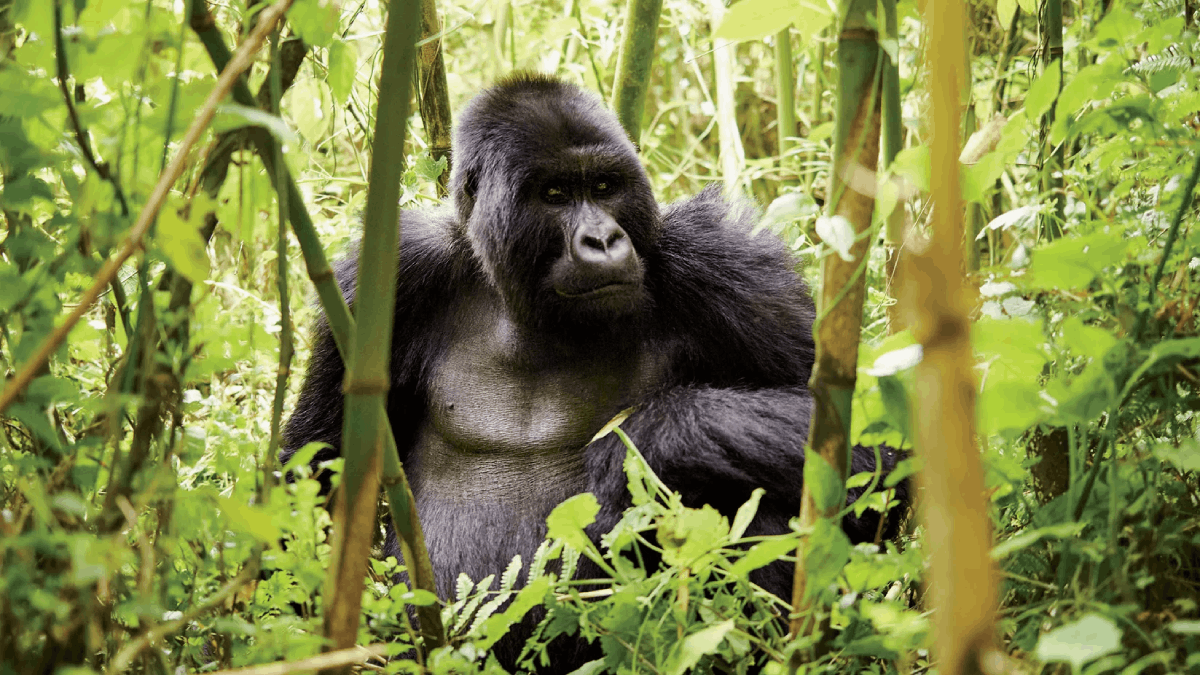
8 Days Rwanda Gorilla Trekking & Serengeti Wildebeest Migration Safari Book your Trip Safari Over View Brief Travel Plan Detailed
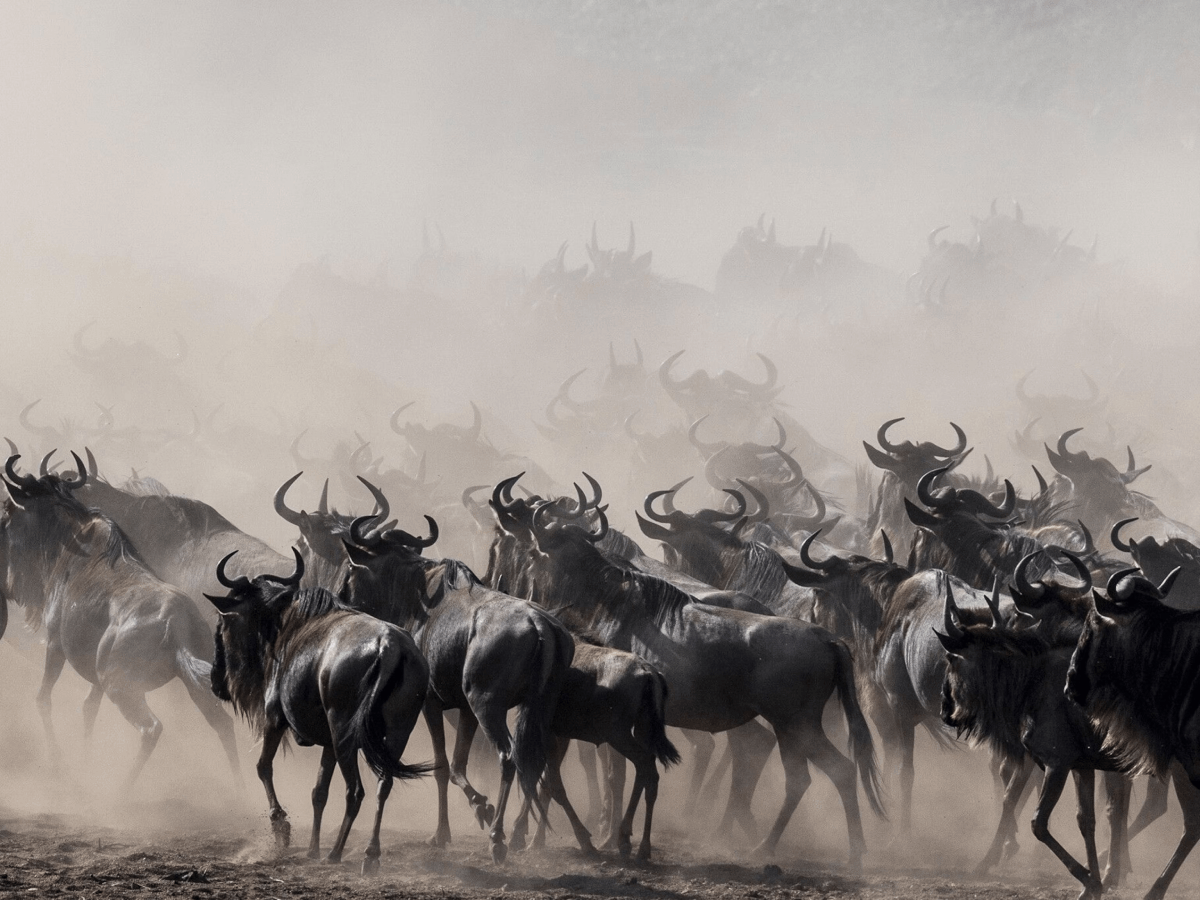
12 Days Serengeti Migration and Gorilla Trekking Safari Book your Trip Safari Over View Brief Travel Plan Detailed Travel Plan
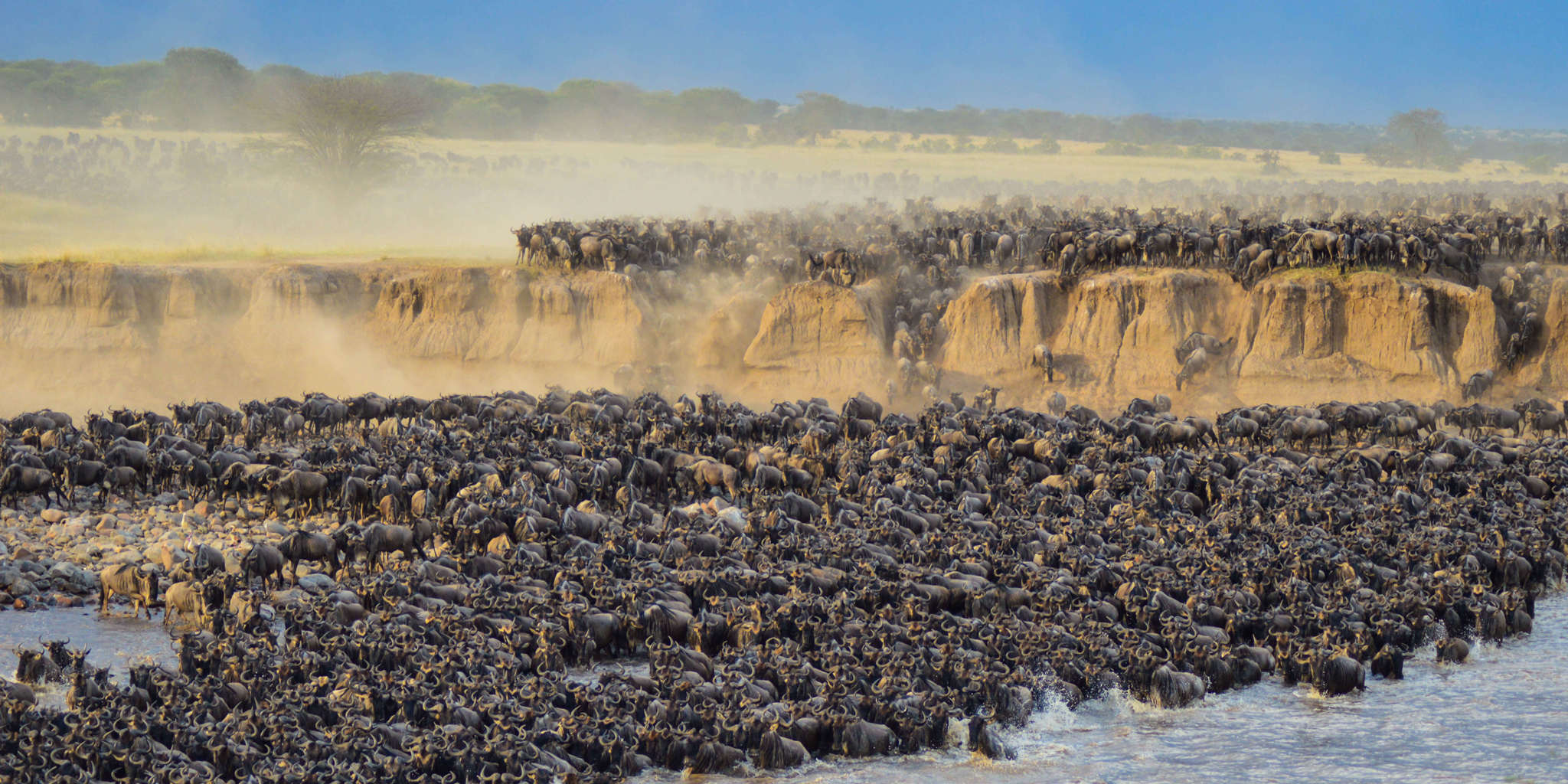
11 Days Gorilla Trekking and Wildebeest Migration Serengeti Safari Book your Trip Safari Over View Brief Travel Plan Detailed Travel
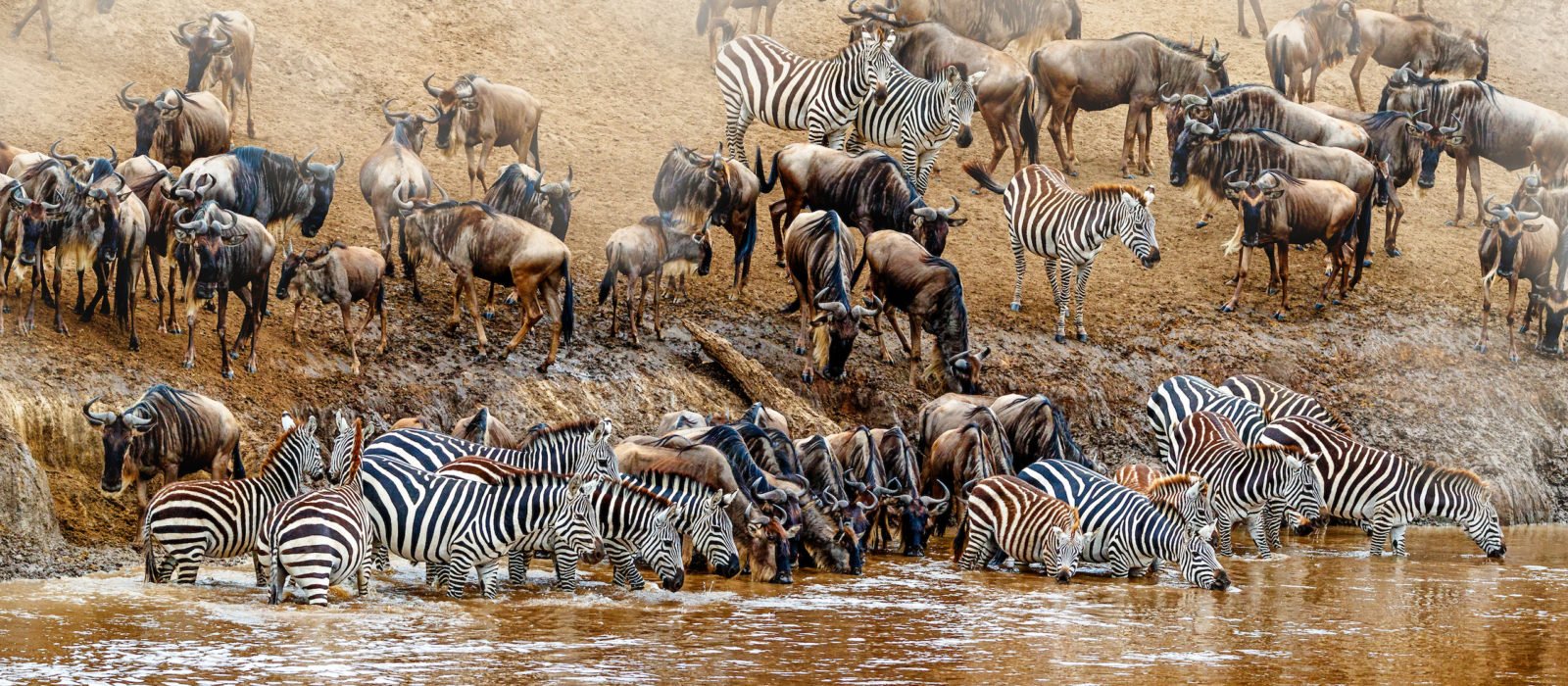
7 Days Tanzania Wildebeest Migration Safari Book your Trip Safari Over View Brief Travel Plan Detailed Travel Plan Trip inclusives
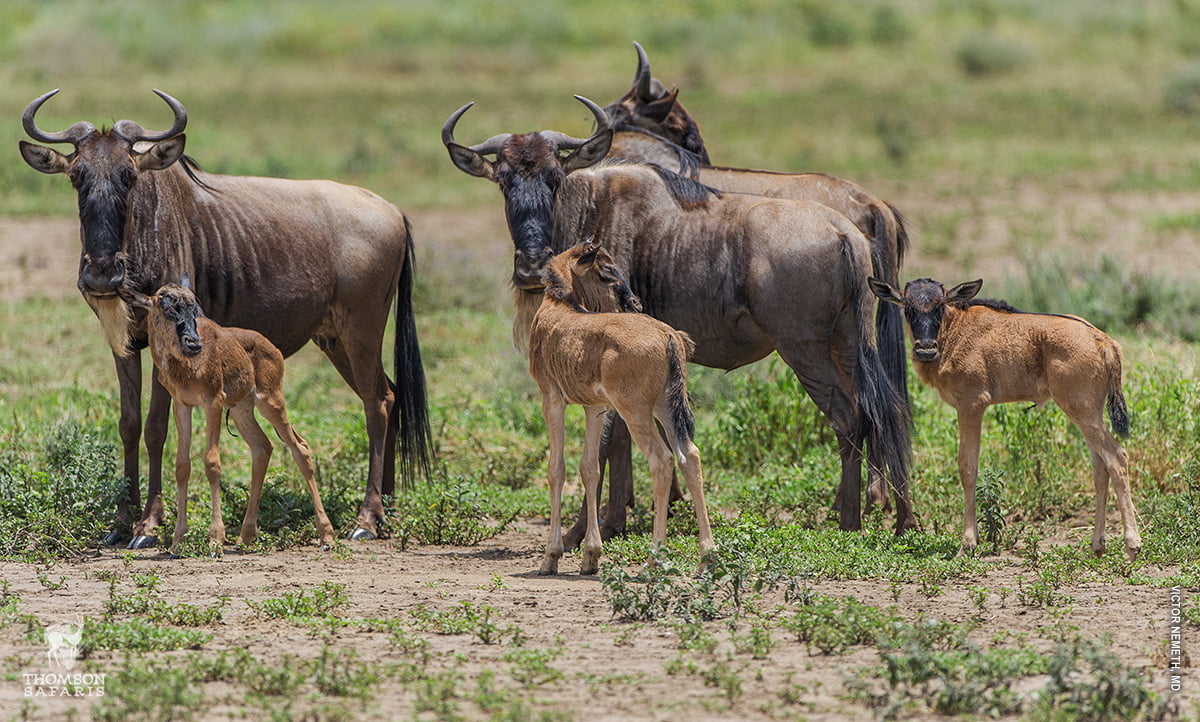
5 Days Serengeti Wildebeest Migration Safari Book your Trip Safari Over View Brief Travel Plan Detailed Travel Plan Trip inclusives
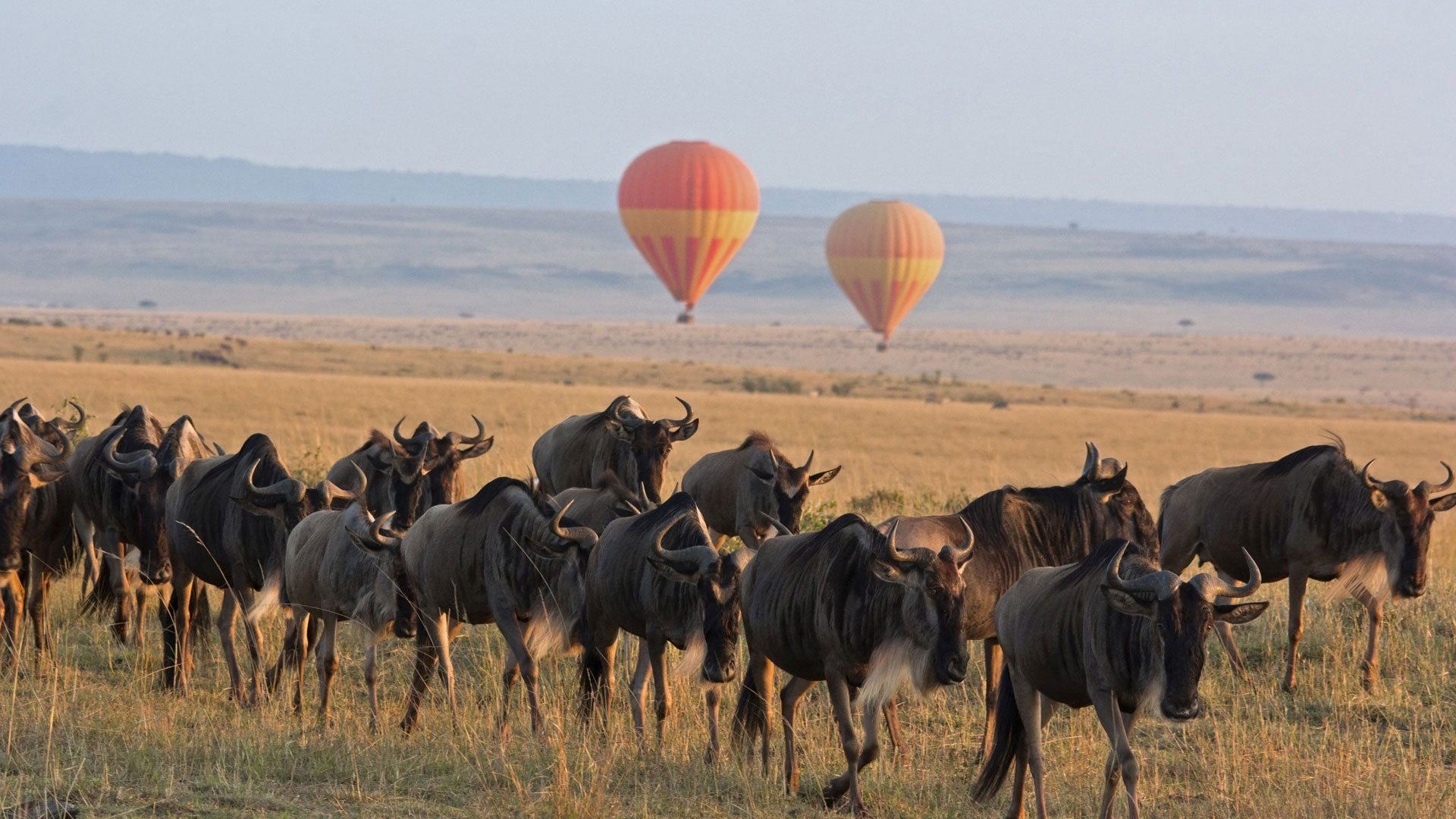
10 Days Wildebeest Migration & Zanzibar Book your Trip Safari Over View Brief Travel Plan Detailed Travel Plan Trip inclusives
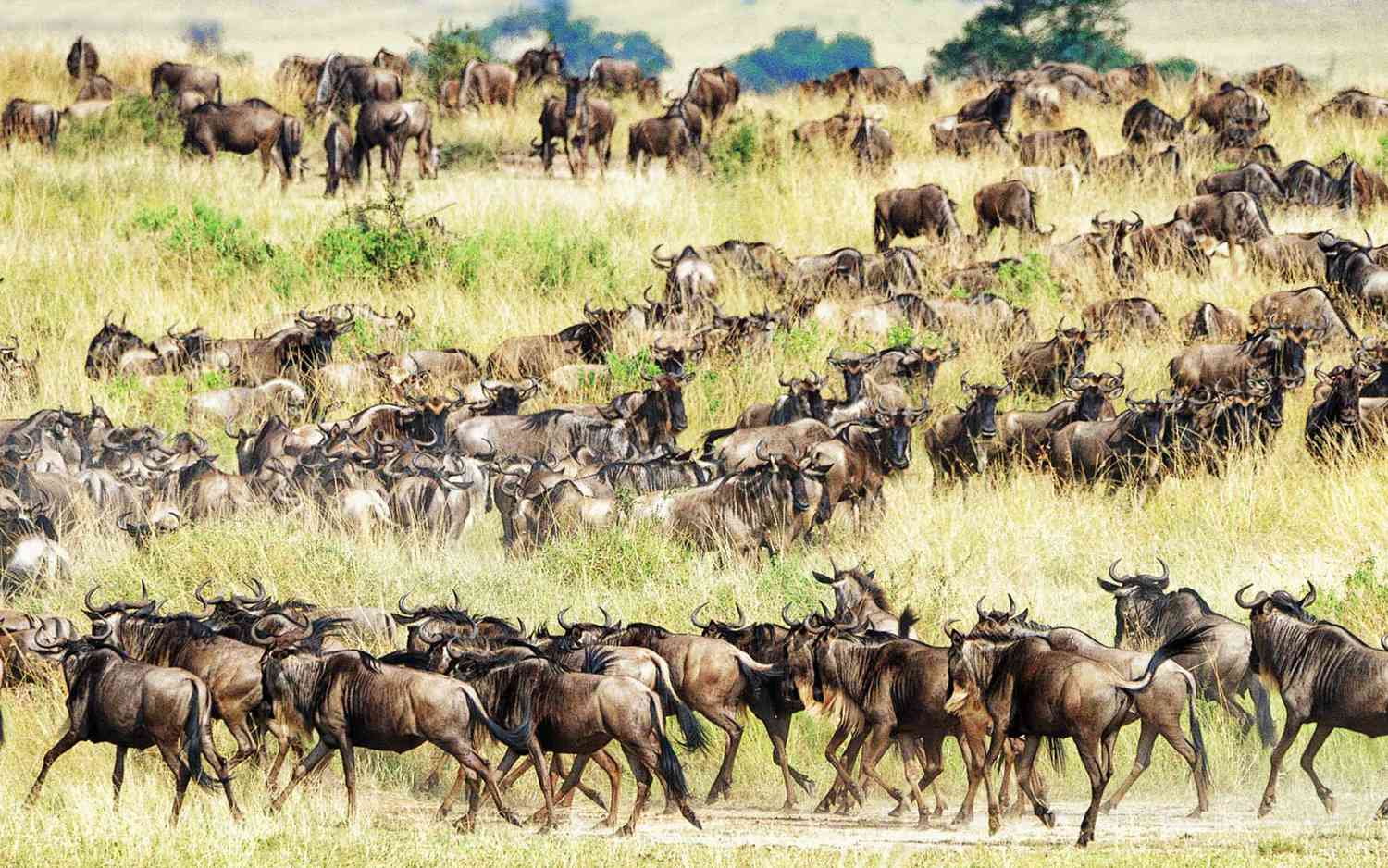
6 Days Luxury Serengeti Migration safari Book your Trip Safari Over View Brief Travel Plan Detailed Travel Plan Trip inclusives
The great wildebeest migration in the months of January m February and March.
Since the annual great wildebeest migration takes place, it always ends in January with a southerly walk that takes the animals through the Ngorongoro conservation area and along the eastern fringe of the Serengeti national park. Here, the plains are more abundant with nourishing grass, giving the herds the ideal surroundings for nurturing their newborn calves. Although this migratory circuit has no true beginning or finish other than the birth and death of the animals, it seems appropriate to refer to the wildebeests’ breeding season as the migration’s beginning.
The herds reside in the short-grass plains in and around Olduvai Gorge and the lower northern slopes of the Ngorongoro Crater highlands in late January or early February. It is anticipated that between 8,000 and 400,000 calves will be born here in the space of two to three weeks. Due to the abundance of weak young calves, the local predators are forced to act quickly and hunt with ease. This is because there are so many wildebeest around. Consider visiting Serengeti National Park in the months of January, February, and March and staying in the southern Serengeti area, which also provides direct access to Ubuntu, Kimondo, and Olakira, the seasonal camps that come next, if you’re interested in seeing the drama of big cats on the hunt and the calving season.
The wildebeest movement in the month of April and May
After giving birth in February and March, the wildebeest start to move their heads north-west toward the fresher pasture of the Central Serengeti in April. They are followed by thousands of zebra and smaller groups of antelope by this time, and by May, the columns of wildebeest stretch for several kilometers as the animals begin to congregate by the Moru Kopjes, which is home to the last black rhinos in Serengeti National Park. One of the few sites in the Serengeti national park that allows migration viewing at this time of year (April or May) in central Serengeti is the Dunia Camp in Moru Kopjes.

Around the end of May, the mating season starts, and male wildebeest engage in head-to-head combat before continuing their journey at their own pace while grazing. Gradually, the movement gathers energy for all the animals, and then they all start to march into the Western Corridor of the Serengeti. The seasonal campgrounds, such as the Ubuntu Migration Camp, will have shifted at this time of year to accompany the migration, giving visitors access to see the wildebeest cross the Grumeti River. While in this River, the herds gather in great numbers along the river’s banks and in its channels, which they must cross to continue their trek. There are still enough wildebeest to give the Grumeti crocs an authentic experience, even though the wildebeest crossing on the Grumeti River is not as noteworthy as one of the famed Mara River crossings in Kenya. It’s also important to keep in mind that May is Ubuntu’s low season, making safaris at this time of year a terrific deal even though there are considerably less tourists in the Serengeti national park.
June and July great wildebeest migration patern.
With dense herds of wildebeest in the western Serengeti region and along the southern banks of the Grumeti River, the dry season begins in early June. Because there are crocodiles in the river, every migratory species will have to confront the obstacle of crossing, making it one of many terrifying encounters for the animal. As July gets underway, hundreds of thousands of wildebeest, zebras, and other animals continue to migrate north along the western edge of the Central Serengeti towards an even riskier barrier: the Mara River, which is situated in the park’s northernmost region. The best wildlife event on Earth is undoubtedly the Wildebeest River crossing along the Mara River. However, scheduling is all up on nature, so the experience is not assured. The animals often start at the beginning of high season in July.
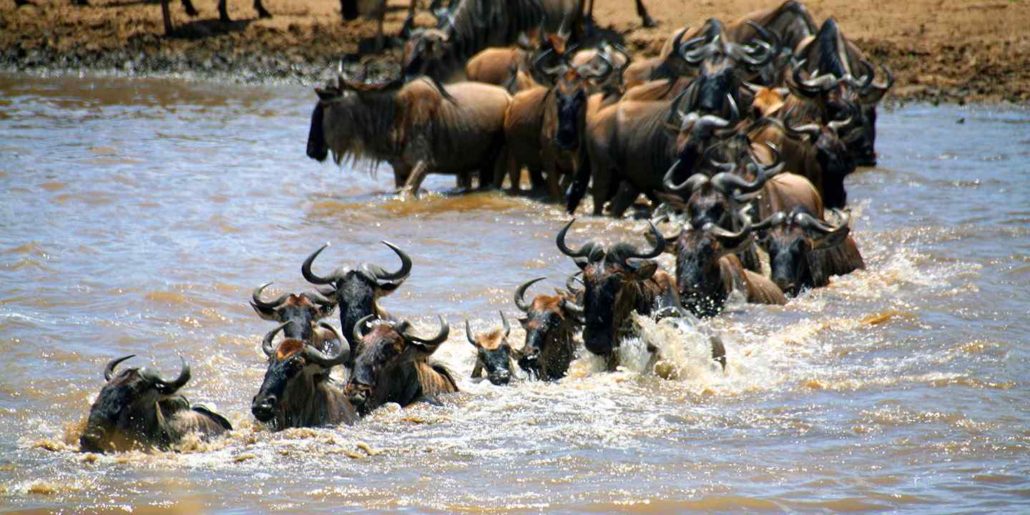
For guests who want to savor the experience a little bit more intensely and closely during the month of July, when the herds are normally found in the Northern Serengeti, there are seasonal camps that are open. The animals crossed the Mara River into Kenya’s Masai Mara national reserve in the middle of July. The finest place to stay in Masai Mara to view the migration is Rekero Camp, which has a large deck overlooking the Tarek River and Mara River.
The migration patterns during the months of August ,September and October
By the end of August, the herds had successfully crossed the Mara River and were dispersed throughout the northern Masai Mara, with many of them still present in the northern Serengeti. The fear and disorientation at the crossings, along with waiting predators and raging currents, can result in a significant loss of life in years when the river is flowing at its fullest. The crocs, however, not to mention the lions and other large predators who watch the banks, ready to ambush any wildebeest that make it to the other side, take their toll even in years of rather gently flowing water. There is no single crossing; at certain locations, there are only a few people, while at others, a large number of animals are seen moving without stopping.
The main commotion had subsided by September or October, and the migrant columns had started to slowly travel east. However, as they are ready to cross the Mara River once more for their return trip southward, the wildebeest will once more encounter its choppy waters.
The great wildebeest migration patterns in the month November and December.
The wildebeest migrate from Kenya into the eastern Serengeti after the East African brief rains in late October and early November, passing via the Namiri Plains, a region renowned for its exceptional cheetah sightings. They cover the entire eastern and southern regions by December.
The Serengeti’s southernmost grasslands receive abundant rainfall in the first few months of the year, attracting not only herds of wildebeest but also tens of thousands of zebra and other plains species. As the new calving season begins, the cycle continues.

we Select Adventure Safaris, a tour opertor based in Uganda offering bespoke safaris across East Africa. Our safaris inlcude gorilla trekking , wildlife excursions, hiking trails , chimpanzee trekking , cultural trails among others.
Address: S&M Plaza Suit F18 Waliggo Road, Komamboga-Kyanja Kampala Uganda
Tell: +256701308058 whatsapp +256778190371
Email:info@selectadventuresafari.com
Website:wwwselectadventuresafari.com

